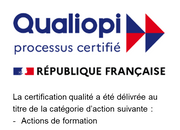ABOUT
NetExpat is the leading global provider for Talent Management and Intercultural Leadership Solutions, and Partner Assistance to 400+ corporate clients. We provide assessment, training, and coaching to expatriates, business travellers and non-mobile employees working on international teams. We support relocating partners with career and integration support. NetExpat was founded over 25 years ago and currently has offices in over 100 countries worldwide. Our growing team consists of over 500 experts, and we are proudly ISO 9001 certified.
Blog

Multinational companies face a significant challenge when working across cultures: how to strike a balance between being compliant and honoring cultural gift-giving norms in professional settings. Why is it such a challenge? What may be expected as a gesture of respect and goodwill in one culture could be considered bribery in another. Missteps can ultimately lead to a damaged company reputation, lost business opportunities, or even legal repercussions. Finding a balance between cultural expectations and compliance is a strategic imperative, but potential conflicts can feel completely overwhelming. With training and preparation, however, workforces can learn to navigate these scenarios with skill. Cultural Gift-Giving Differences in Professional Settings Gift giving has always been used in professional settings to show respect, build rapport, and lay the groundwork for meaningful business relationships around the world. Under the right circumstances, a carefully chosen gift can symbolize trust and partnership, opening the door to successful collaboration. Failure to understand cultural norms and expectations can result in costly mistakes. Below, we provide a few examples of varying gift-giving norms to illustrate the importance of cultural agility when doing business across cultures.

As Director of Global Client Services at NetExpat, Maru Machado brings a dynamic blend of operational expertise and global perspective to her role. With a rich background in international event production, clinical travel management, and client services, Maru brings a global mindset to everything she does. Her multicultural experience—both professional and personal as a former expat—deeply informs her approach to leadership and client support. Now leading a diverse team across the U.S., Maru thrives on connecting with people around the world, improving service delivery, and creating meaningful impact for globally mobile professionals and their families.

Mergers and acquisitions (M&As) are high-stakes ventures that promise growth, innovation, and a competitive advantage, but that promise can only be realized by prioritizing a critical factor that can make or break the success of the initiative: culture. Whether it's the diversity of global cultures in multinational mergers or the differences between two distinct corporate cultures, the challenges are significant. A failure to integrate effectively doesn’t just threaten the success of the merger, it also impacts the financial health of an organization. Below, we discuss the cultural complexities of M&As, the risks of ignoring them, and actionable strategies to bridge related gaps effectively. Challenges in Cultural Integration During Mergers and Acquisitions Asking diverse groups of people to collaborate efficiently without supporting them and "translating" their different priorities, values, and cultural norms is risky under any circumstances. This is particularly important in M&As, where two diverse workforces have learned to do business in ways that have been defined by their separate employers. In multinational mergers, differences in communication styles, decision making, and business etiquette can create friction or complete breakdowns in productivity. Corporate culture clashes can also occur from contrasting leadership styles, organizational values, levels of employee engagement, and cultural attitudes about change. Without targeted attention, these challenges can undermine collaboration, erode trust, and jeopardize the success of the merger.

A series of trends and events are impacting the way APAC-based companies are doing business, as well as how international organizations engage with them. As workforce borders within this active region continue to blur, intercultural agility has become more important – and more nuanced – than ever before. Whether it’s a business that's building a diverse workforce within the APAC region or a multi-national company working across cultures to do business with them, employers and the employees that work for them must forget everything they think they know about intercultural communication. Growing workforce diversity means not just knowing about the culture a business is headquartered in, but also the many cultures making up their staff. Intercultural training has therefore become a crucial investment for any business hoping to thrive in this diverse landscape.








